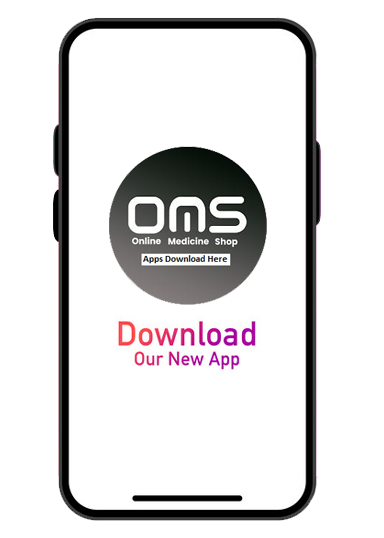
Bio-Oil Specialist Skincare Anti Stretch Mark Oil 60ml
৳ 700
Quantity:
1
SKU: T2M0170
Order By Call:
+88 01540 384 786 (Mobile)
+88 01819 479 004 (WhatsApp)
About the Product
Full Description
\n
\n \n
\nIndications
\nNabumetone is indicated for relief of signs and symptoms of osteoarthritis and rheumatoid arthritis. Carefully consider the potential benefits and risks of Nabumetone and other treatment options before deciding to use Nabumetone. Use the lowest effective dose for the shortest duration consistent with individual patient treatment goals
\n \n
\n \n
\nTherapeutic Class
\nDrugs for Osteoarthritis, Drugs used for Rheumatoid Arthritis
\n \n
\n \n \n
\nPharmacology
\n \n \nNabumetone is a naphthylalkanone. Is is a non-selective prostaglandin G/H synthase (a.k.a. cyclooxygenase or COX) inhibitor that acts on both prostaglandin G/H synthase 1 and 2 (COX-1 and -2). Prostaglandin G/H synthase catalyzes the conversion of arachidonic acid to prostaglandin G2 and prostaglandin G2 to prostaglandin H2. Prostaglandin H2 is the precursor to a number of prostaglandins involved in fever, pain, swelling, inflammation, and platelet aggregation. The parent compound is a prodrug that undergoes hepatic biotransformation to the active compound, 6-methoxy-2-naphthylacetic acid (6MNA). The analgesic, antipyretic and anti-inflammatory effects of NSAIDs occur as a result of decreased prostaglandin synthesis. \n \nThe parent compound is a prodrug, which undergoes hepatic biotransformation to the active component, 6-methoxy-2-naphthylacetic acid (6MNA), that is a potent inhibitor of prostaglandin synthesis, most likely through binding to the COX-2 and COX-1 receptors. \n \n
\n \n
\n \n
\nDosage & Administration
\nOsteoarthritis and Rheumatoid Arthritis: The recommended starting dose is 1,000 mg taken as a single dose with or without food. Some patients may obtain more symptomatic relief from 1,500 mg to 2,000 mg per day. Nabumetone can be given in either a single or twice-daily dose. Dosages greater than 2,000 mg per day have not been studied. The lowest effective dose should be used for chronic treatment.? Patients weighing under 50 kg may be less likely to require dosages beyond 1,000 mg; therefore, after observing the response to initial therapy, the dose should be adjusted to meet individual patients? requirements.
\n \n
\n \n
\nInteraction
\nReports suggest that NSAIDs may diminish the antihypertensive effect of ACE-inhibitors. This interaction should be given consideration in patients taking NSAIDs concomitantly with ACE-inhibitors.
\n \n
\n \n \n
\nContraindications
\nNabumetone is contraindicated in patients with known hypersensitivity to nabumetone or its excipients. Nabumetone should not be given to patients who have experienced asthma, urticaria, or allergictype reactions after taking aspirin or other NSAIDs. Severe, rarely fatal, anaphylactic-like reactions to NSAIDs have been reported in such patients. Nabumetone is contraindicated for the treatment of peri-operative pain in the setting of coronary artery bypass graft (CABG) surgery
\n \n
\n \n
\nSide Effects
\n \n \nGastrointestinal: Diarrhea (14%), dyspepsia (13%), abdominal pain (12%), constipation, flatulence, nausea, positive stool guaiac, dry mouth, gastritis, stomatitis, vomiting. \n \nCentral Nervous System: Dizziness, headache, fatigue, increased sweating, insomnia, nervousness, somnolence. \n \nDermatologic: Pruritus, rash \n \nSpecial Senses: Tinnitus \n \nMiscellaneous: Edema \n \n
\n \n
\n \n
\nPregnancy & Lactation
\n \n \nPregnancy?Category C. Reproductive studies conducted in rats and rabbits have not demonstrated evidence of developmental abnormalities. However, animal reproduction studies are not always predictive of human response. There are no adequate, well-controlled studies in pregnant women. Nabumetone should be used in pregnancy only if the potential benefit justifies the potential risk to the fetus. \n \nNursing Mothers: It is not known whether this drug is excreted in human milk, however 6MNA is excreted in the milk of lactating rats. Because many drugs are excreted in human milk and because of the potential for serious adverse reactions in nursing infants from Nabumetone, a decision should be made whether to discontinue nursing or to discontinue the drug, taking into account the importance of the drug to the mother. \n \nLabor and Delivery: In rat studies with NSAIDs, as with other drugs known to inhibit prostaglandin synthesis, an increased incidence of dystocia, delayed parturition, and decreased pup survival occurred. The effects of Nabumetone on labor and delivery in pregnant women are unknown. \n \n
\n \n
\n \n
\nPrecautions & Warnings
\nNabumetone cannot be expected to substitute for corticosteroids or to treat corticosteroid insufficiency. Abrupt discontinuation of corticosteroids may lead to disease exacerbation. Patients on prolonged corticosteroid therapy should have their therapy tapered slowly if a decision is made to discontinue corticosteroids. The pharmacological activity of Nabumetone in reducing fever and inflammation may diminish the utility of these diagnostic signs in detecting complications of presumed noninfectious, painful conditions
\n \n
\n \n
\nUse in Special Populations
\n \n \nPediatric Use: Safety and effectiveness in pediatric patients have not been established. \n \nGeriatric Use: As with any NSAIDs, caution should be exercised in treating the elderly (65 years and older). \n \n
\n \n
\n \n
\nOverdose Effects
\n \n \nSymptoms following acute NSAIDs overdoses are usually limited to lethargy, drowsiness, nausea, vomiting, and epigastric pain, which are generally reversible with supportive care. Gastrointestinal bleeding can occur. Hypertension, acute renal failure, respiratory depression, and coma may occur, but are rare. Anaphylactoid reactions have been reported with therapeutic ingestion of NSAIDs, and may occur following an overdose. \n \nPatients should be managed by symptomatic and supportive care following a NSAIDs overdose. There are no specific antidotes. Emesis and/or activated charcoal (60 to 100 grams in adults, 1 to 2 g/kg in children), and/or osmotic cathartic may be indicated in patients seen within 4 hours of ingestion with symptoms or following a large overdose (5 to 10 times the usual dose). Forced diuresis, alkalinization of urine, hemodialysis, or hemoperfusion may not be useful due to high protein binding. \n \nThere have been overdoses of up to 25 grams of Nabumetone reported with no long-term sequelae following standard emergency treatment (i.e., activated charcoal, gastric lavage, IV H2-blockers, etc.). \n \n
\n \n
\n
\nStorage Conditions
\nStore at 25?C; excursions permitted to 15-30?C in well-closed container; dispense in light-resistant container.
\n




